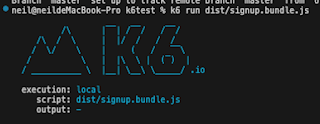[ Mongodb ] mongodb基本操作 20160530
// 取得collection建立的索引
db.collection.getIndexes();
// 建立複合式索引,所為不可重複的 (a: ascending,b: ascending)
db.collection.createIndex( { a:1 , b:1 }, { unique: true });
若把{ a:1, b:1 } 改成 { a:-1,b:-1 } 則表示是用descending的方式
sort({ _id: -1 }) =====> sort by created time descending
Mongodb是設計給分散式系統用的
ObjectId
_id 的預設值就是ObjectId
ObjectId使用12 bytes儲存, 也就是由24個16進位的數字組成
第0~ 3 個bytes -> timestamp
第4~ 6 個bytes -> Machine
第7~ 8 個bytes -> PID
第9~11個bytes -> Increment
由於ObjectId前面是由timestamp組成, ObjectId可以大約當成是塞入的順序
Mongoshell
你可以將shell javascript傳給mongoshell去執行
$ mongo script1.js script2.js script3.js
Updating
一般Mongodb使用update時,是將整筆資料給取代
若想只更新部分的欄位,必須使用$set來更新
想移除某個欄位,使用$unset
遞增
$inc: { 欄位: 增加的數字 }
ex: $inc: { $pageView: 1 } // 遞增1
$push
ex:
原本的資料長這樣
{
"_id" : ObjectId("4b2d75476cc613d5ee930164"), "title" : "A blog post",
"content" : "...",
"comments" : [
{ "name" : "joe",
"email" : "joe@example.com",
"content" : "nice post."
}
]
}
如果想在comments內新
增其他的物件,可使用$push
{"$push" :
{
"comments" :
{"name" : "bob", "email" : "bob@example.com", ... "content" : "good post."}
}
}
db.collection.createIndex( { a:1 , b:1 }, { unique: true });
若把{ a:1, b:1 } 改成 { a:-1,b:-1 } 則表示是用descending的方式
sort({ _id: -1 }) =====> sort by created time descending
Mongodb是設計給分散式系統用的
ObjectId
_id 的預設值就是ObjectId
ObjectId使用12 bytes儲存, 也就是由24個16進位的數字組成
第0~ 3 個bytes -> timestamp
第4~ 6 個bytes -> Machine
第7~ 8 個bytes -> PID
第9~11個bytes -> Increment
由於ObjectId前面是由timestamp組成, ObjectId可以大約當成是塞入的順序
Mongoshell
你可以將shell javascript傳給mongoshell去執行
$ mongo script1.js script2.js script3.js
Updating
一般Mongodb使用update時,是將整筆資料給取代
若想只更新部分的欄位,必須使用$set來更新
想移除某個欄位,使用$unset
遞增
$inc: { 欄位: 增加的數字 }
ex: $inc: { $pageView: 1 } // 遞增1
$push
ex:
原本的資料長這樣
{
"_id" : ObjectId("4b2d75476cc613d5ee930164"), "title" : "A blog post",
"content" : "...",
"comments" : [
{ "name" : "joe",
"email" : "joe@example.com",
"content" : "nice post."
}
]
}
如果想在comments內新
增其他的物件,可使用$push
{"$push" :
{
"comments" :
{"name" : "bob", "email" : "bob@example.com", ... "content" : "good post."}
}
}
結果如下
{
"_id" : ObjectId("4b2d75476cc613d5ee930164"),
"title" : "A blog post",
"content" : "...",
"comments" : [
{ "name" : "joe",
"email" : "joe@example.com",
"content" : "nice post." },
{ "name" : "bob",
"email" : "bob@example.com",
"content" : "good post." }
]
}
其他的還有 $addToSet, $addToSet + $each ..
請自行參閱:https://docs.mongodb.com/manual/reference/operator/update/push/
Upsert
簡單說就是更新某個條件時, 如果該條件可以找得到資料, 就更新該筆
找不到該筆的話, 就新增進去資料庫中
必須使用 $setOnInsert
ex:
db.products.update( {
{
"_id" : ObjectId("4b2d75476cc613d5ee930164"),
"title" : "A blog post",
"content" : "...",
"comments" : [
{ "name" : "joe",
"email" : "joe@example.com",
"content" : "nice post." },
{ "name" : "bob",
"email" : "bob@example.com",
"content" : "good post." }
]
}
其他的還有 $addToSet, $addToSet + $each ..
請自行參閱:https://docs.mongodb.com/manual/reference/operator/update/push/
Upsert
簡單說就是更新某個條件時, 如果該條件可以找得到資料, 就更新該筆
找不到該筆的話, 就新增進去資料庫中
必須使用 $setOnInsert
ex:
db.products.update( {
_id: 1
}, {
$set: {
item: "apple"
},
$setOnInsert: {
defaultQty: 100
}
}, { upsert: true } );
findAndModified
如果需要更新後並得到該筆資料, 如果使用upsert更新之後再拿_id取得該筆資料
效能不如使用findAndModified來得好
db.collection.findAndModify({
query: <document>, // 用來查詢想要選取的資料
sort: <document>, // 將取得的資料排序
remove: <boolean>, // *必填 決定被選取的資料是否要被刪除
update: <document>, // *必填 可使用這些 modifiers來更新資料
new: <boolean>, // true: 返回被修改後的資料, false: 原本沒被改過的資料
fields: <document>, // 選擇哪些欄位要出現 { field1: 1, field:2 .. }
upsert: <boolean>, // 與update欄位連動的欄位, 如果為true時, 當query找不到資料時, 自動新增一筆資料進去, 預設為false
bypassDocumentValidation: <boolean>, // true: 可以在更新的時候不會遇到資料驗證的請求
writeConcern: <document> // A document expressing the write concern. Omit to use the default write concern
});
詳情請見: FindAndModified
Write Concern
當新增/刪除/查詢/修改 資料的時候, 我們都會關心這次的操作是否成功. 基本上預設是都會回傳是否成功,但對於某些資料並不是那麼重要的資料: logs, bulk data loading等, 就不需要知道這些了.
基本的兩個write concern:
- acknowledged
- 新增/刪除/查詢/修改
- unacknowledged
- ex: logs, bulk data loading
假如sockert斷了或是寫入時發生錯誤, 仍然會造成例外處理
ex:
> db.foo.insert({"_id" : 1})
> db.foo.insert({"_id" : 1})
E11000 duplicate key error index: test.foo.$_id_ dup key: { : 1.0 }
已經大改版, 新版的請參考這裡

留言
張貼留言